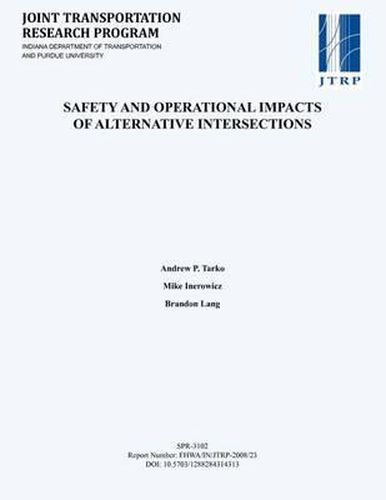Readings Newsletter
Become a Readings Member to make your shopping experience even easier.
Sign in or sign up for free!
You’re not far away from qualifying for FREE standard shipping within Australia
You’ve qualified for FREE standard shipping within Australia
The cart is loading…






As the degradation of service at some conventional intersections increases, there becomes a need for alternative solutions other than expensive interchanges. Under certain traffic and local conditions some alternative intersections are more promising than other solutions. In some cases, the conventional intersection may still be the optimal choice. The presented research focused on developing guidelines that would help planners and designers identify the most promising solutions for further analysis. Although a large number of sources could be found on the research subject, the existing knowledge about performance of alternative intersection design is incomplete. Only a few designs proposed in the past have been applied at a considerable number of locations; other types still await implementation. The available sources are not comprehensive and deal with conditions that might be different from Indiana. The knowledge of the safety impact of these intersections is very limited. A large number of more than 1,300 scenarios were simulated runs performed with VISSIM calibrated to Indiana conditions. The simulated types of intersections included: conventional, roundabouts, jag-handle near-sided and far-sided, median U-turns, and continuous-flow intersection. Except roundabouts, all intersections were signalized to test their capacity limits and delay-based performance. The presented research developed guidelines for using alternative intersection designs. The guidelines compile the existing knowledge found in existing publications and research reports with the simulation experiments performed with VISSIM. The guidelines are ready to use and will help planners and designers determine which intersection types are the most promising under considered conditions and should be considered in a detailed way.
$9.00 standard shipping within Australia
FREE standard shipping within Australia for orders over $100.00
Express & International shipping calculated at checkout
As the degradation of service at some conventional intersections increases, there becomes a need for alternative solutions other than expensive interchanges. Under certain traffic and local conditions some alternative intersections are more promising than other solutions. In some cases, the conventional intersection may still be the optimal choice. The presented research focused on developing guidelines that would help planners and designers identify the most promising solutions for further analysis. Although a large number of sources could be found on the research subject, the existing knowledge about performance of alternative intersection design is incomplete. Only a few designs proposed in the past have been applied at a considerable number of locations; other types still await implementation. The available sources are not comprehensive and deal with conditions that might be different from Indiana. The knowledge of the safety impact of these intersections is very limited. A large number of more than 1,300 scenarios were simulated runs performed with VISSIM calibrated to Indiana conditions. The simulated types of intersections included: conventional, roundabouts, jag-handle near-sided and far-sided, median U-turns, and continuous-flow intersection. Except roundabouts, all intersections were signalized to test their capacity limits and delay-based performance. The presented research developed guidelines for using alternative intersection designs. The guidelines compile the existing knowledge found in existing publications and research reports with the simulation experiments performed with VISSIM. The guidelines are ready to use and will help planners and designers determine which intersection types are the most promising under considered conditions and should be considered in a detailed way.